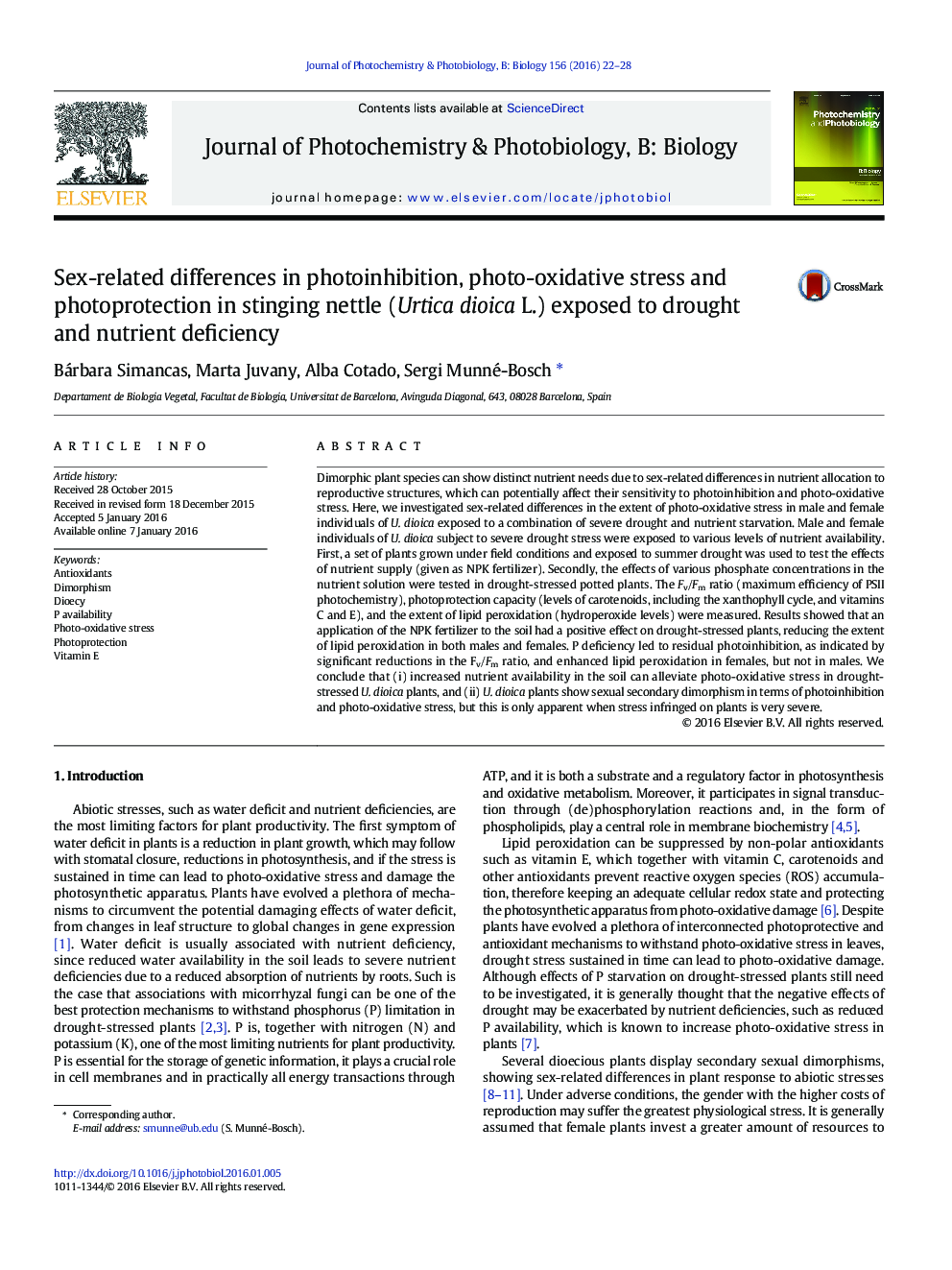| Article ID | Journal | Published Year | Pages | File Type |
|---|---|---|---|---|
| 29516 | Journal of Photochemistry and Photobiology B: Biology | 2016 | 7 Pages |
•Nutrient availability in the soil can alleviate photo-oxidative stress in drought-stressed plants•U. dioica plants show sexual secondary dimorphism in terms of photoinhibition and photo-oxidative stress•Females are more sensitive than males to photoinhibition and lipid peroxidation under a combination of drought stress and P starvation
Dimorphic plant species can show distinct nutrient needs due to sex-related differences in nutrient allocation to reproductive structures, which can potentially affect their sensitivity to photoinhibition and photo-oxidative stress. Here, we investigated sex-related differences in the extent of photo-oxidative stress in male and female individuals of U. dioica exposed to a combination of severe drought and nutrient starvation. Male and female individuals of U. dioica subject to severe drought stress were exposed to various levels of nutrient availability. First, a set of plants grown under field conditions and exposed to summer drought was used to test the effects of nutrient supply (given as NPK fertilizer). Secondly, the effects of various phosphate concentrations in the nutrient solution were tested in drought-stressed potted plants. The Fv/Fm ratio (maximum efficiency of PSII photochemistry), photoprotection capacity (levels of carotenoids, including the xanthophyll cycle, and vitamins C and E), and the extent of lipid peroxidation (hydroperoxide levels) were measured. Results showed that an application of the NPK fertilizer to the soil had a positive effect on drought-stressed plants, reducing the extent of lipid peroxidation in both males and females. P deficiency led to residual photoinhibition, as indicated by significant reductions in the Fv/Fm ratio, and enhanced lipid peroxidation in females, but not in males. We conclude that (i) increased nutrient availability in the soil can alleviate photo-oxidative stress in drought-stressed U. dioica plants, and (ii) U. dioica plants show sexual secondary dimorphism in terms of photoinhibition and photo-oxidative stress, but this is only apparent when stress infringed on plants is very severe.
